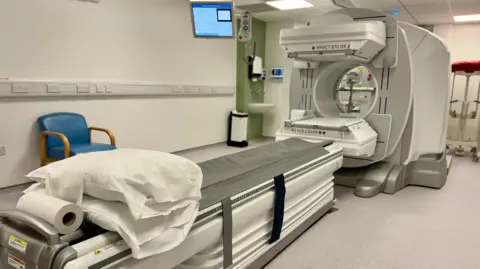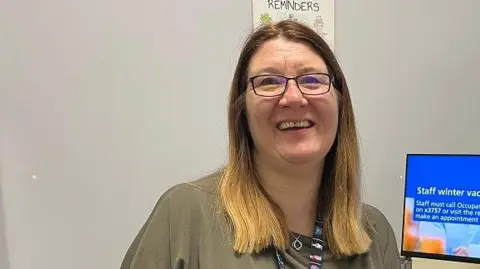Nuclear scanner 'like going from Ford to Ferrari'
 QEH
QEHA new scanner which uses nuclear technology to get better images of patients is being used at a hospital.
The "gamma camera" at Queen Elizabeth Hospital (QEH) in King's Lynn, Norfolk, offers fast 3D images showing how well an organ, bone or internal system is working and any abnormalities.
For some patients, the scan time will be more than halved to 12 minutes compared to 27 minutes with the previous camera.
It means more patients can be seen and doctors get images with more information for diagnosis.

Radiology manager Sam Newton said the new £1.75m scanner provided more information about a potential problem in an organ or system.
She said the technological advances of the equipment were like going from "a Ford to a Ferrari".
"It is just another imaging tool that we can use to find out what's going wrong with a patient," she said.
People coming in for scans are injected with special liquid, called a radiopharmaceutical.
This helps a particular organ or system to show up and any areas of concern to be highlighted.
It is known as nuclear medicine because of the way in which radioactive isotopes are used to create the scans.

Lee Evans, radiology risk manager, said the new scanner combined the best of both worlds for patients by incorporating a CT scanner alongside the gamma technology.
"You can use a CT scanner and show that someone has kidneys, but it doesn't necessarily tell you all that much about how much they're working or how well they are working in the same way a gamma camera does.
"By adding the two together, you can see the actual structure that you are looking at; you can locate it and you can see what it's doing".
Follow Norfolk news on BBC Sounds, Facebook, Instagram and X.
